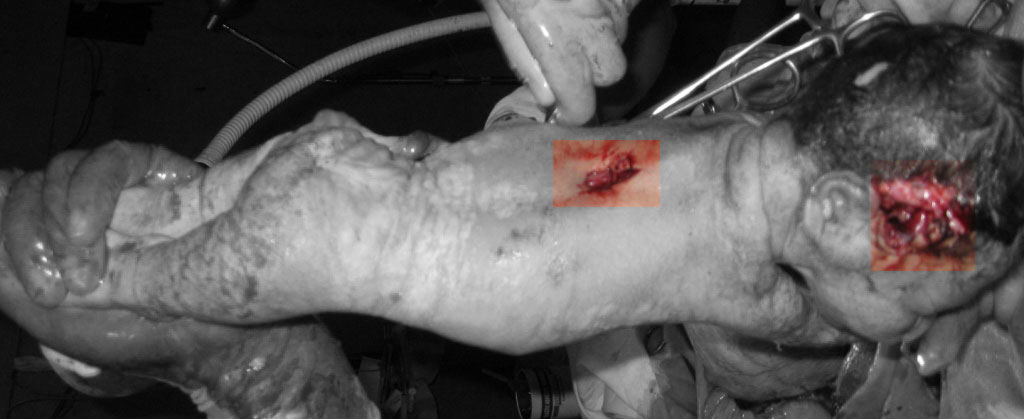Lawrence Christy, planning director at the Tamils Rehabilitation Organization (TRO) details the human toll due to indiscriminate firing of artillery shells by the Sri Lanka Army (SLA) into the demarcated safety zone where more than 200,000 Tamil civilans have taken refuge. United Nations leaked document listed the number of killed as 2683 and wounded as 7241 between January 20 and March 7. Hundreds have been killed and injured in the last three weeks.
The latest on the ground report released by Christy, details the human misery within the civilian population that is staying within the Safety Zone.
“A doctor in the Mathalan hospital told me that they had to do a cesarean operation on a wounded pregnant woman. The baby was born dead with a shell shrapnel inside its stomach. In another case a baby was born with both legs severed by shell piece. Both mother and baby were dead,” Christy says in the report.
A woman was brought to the hospital. An RPG shell has gone through her both thighs and has stopped coming out. It was like an arrow trapped between the legs. The shell didn’t explode. She was taken to the operation theatre. The surgery has to be done carefully. The shell may explode at any time. Disposal specialist on unexploded ordnances had to be brought. He removed the fuses and made the shell inactive. Then both legs – one from the thigh and the other from the knee were amputated. Her life was saved but she was condemned to live as a disable person without both legs throughout the rest of her life.
“A lone shell fell 30 metres away from our shelter at about 9.00 in the morning. No one expected. With big sound and flash a force shook our shelter – we all fell flat on the sandy ground. Taking cover in our bunker for few seconds we emerged from it and rushed to the spot where the shell fell. Wounded were taken to hospital on motor bicycles. A man’s intestines were out. A boy went with him on the motor cycle was seen pushing them inside. A woman’s leg was dangling from her left thigh. A child was wounded all over her body. I peeped through the cadjan cover into a shelter which got the brunt of the shell attack. Four people lay dead. An old woman, a lady, her teenage daughter and a small girl. The lady’s body was partly covered by sand.
“TRO organized a tractor to be brought for the dead to be buried. The dead bodies were put into the tractor while a TRO staff was taking note from the husband of the young lady about the identification of the dead persons. Shell fragments have made deep holes on the bodies of the dead persons. The clothes were drenched by blood. The blood of them has flowed in the sand and has made wet and red spots here and there. The small child’s head was not there. Her hand was clutching a piece of rotti which she was eating when the deadly shell fell. My colleague told a TRO volunteer to collect everything for burial. TRO volunteer was picking up what remained – small pieces of the child’s head and was putting them into a bag,” Christy says as an eyewitness to the unfolding tragedy.
TRO labors on in Vanni to provide relief to the civilians amidst the mayhem and carnage, civil sources said of TRO’s work.
“Coordination meetings are held in short intervals to expedite the relief activities. Important decisions are taken to ease the burden of the IDP population. This is attended by government representatives (de jure and de facto), TRO, local and international NGO and ICRC (local staff), cooperative representatives, Health and local government services and NGOO consortiums,” Christy says demonstrating his years of experience as an administrator, reinforcing that an organized approach to relief is critical even in the most difficult of situations.

